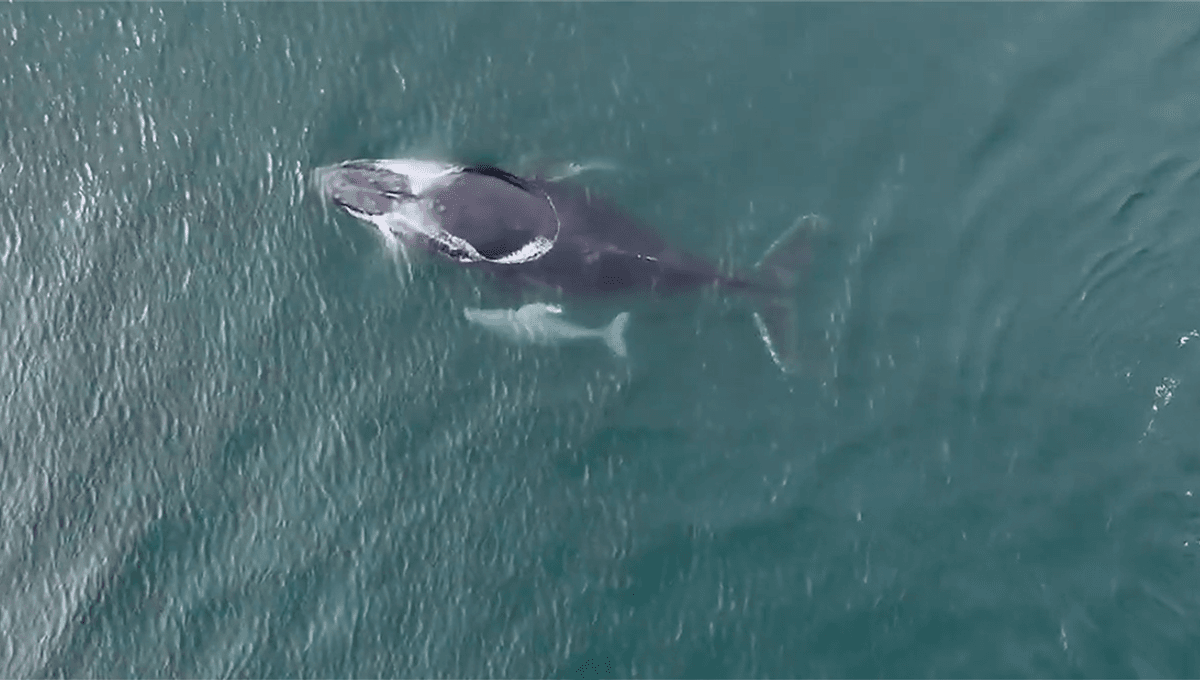Between May and August, thousands of humpback whales migrate north along Australia's East coast to warmer waters. They travel from the chilly Antarctic waters to tropical regions such as the Great Barrier Reef to breed, and sometimes babies are born along the way. One such humpback calf is making waves for being a rare white whale.
The whale calf was recorded by drone on June 30 by Sydney-based photographer Chris Prestidge. “It’s just really lucky, right place, right time,” Prestige told 7News Australia. "I showed a few people in the car park there and they were like 'wow, I've never seen an albino whale before'." This is far from the first white whale calf out there. In Tonga in October last year, another white humpback was filmed swimming with its mother. While off the coast of Argentina, a southern right white whale calf was also seen in 2024. In Australia, a white whale called Migaloo was first spotted in 1991 and caused quite a stir with many whale watchers catching glimpses of him over the years. In 2004, DNA samples were collected from dead skin cells from Migaloo, showing that he was a male, likely to have been born around 1986. There have been no confirmed sightings of Migaloo since 2020. These calves' unique coloration is down to either albinism or leucism. Albinism is a genetic mutation that affects the production of the pigment melanin within the skin of an animal, even the eyes. This is a relatively common phenomenon in the animal world and can be seen in all sorts of species, including anteaters. Leucism is the partial pigmentation loss in the skin surface and can result in a more patchy appearance. The white whale calf does stand out, and typically, those with a different coloration are more at risk from predators since they lack their natural camouflage. For a whale calf, their biggest threats are orcas and great white sharks.





